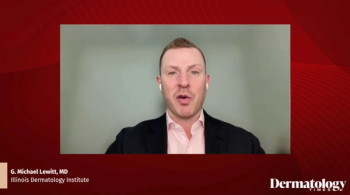
Looking Toward the Future Management of Vitiligo
Looking toward the future management of vitiligo, expert dermatologists close out their discussion on JAK inhibition and other novel therapy.
Episodes in this series

Transcript:
Seemal Desai, MD, FAAD: While we’re on the topic of JAK inhibition, since it’s such a new therapy, Bill, what are some of the other new therapies out there that you’re excited about or that you’ve heard about in the pipeline?
William Damsky, MD, PhD: I think there are a number [of therapies]. It’s such an exciting time in vitiligo because there’s so much attention from the pharmaceutical industry and there are so many trials. I would say the vast majority are with JAK inhibitors. JAK inhibitors can be administered topically, like on the ruxolitinib studies, or orally. I think there are advantages and potential disadvantages to both. There are investigational programs with novel topical and oral JAK inhibitors, and I think it will be really exciting to look at how JAK, not only specificity, but the route with which it’s administered, affects therapy. As you mentioned, there’s a really interesting drug that targets IL [interleukin]-15. We know IL-15 is involved in cytotoxic T-cell responses. As you mentioned, it’s involved in T-cell memory. And so there are a lot of reasons to think that it could help patients with vitiligo. I think that’s going to be a really important study to keep an eye on. There’s a proof of concept study that’s underway now looking at IL-15 blockade in patients with vitiligo, and we’ve all got our fingers crossed that it’s going to work. The point about IL-15 in memory I think is an interesting one because one can conceive that if you were able to turn off that memory response, that you may not only be looking at treatment for vitiligo, but you may be looking at long-lasting treatment. We all have our ears perked up, listening for how those clinical trials turn out.
Seemal Desai, MD, FAAD: I think you hit the nail on the head. There’s so much excitement, we’re almost going into a new frontier in our treatment of vitiligo, I like to say, which is why I’m so enthusiastic about helping the millions and millions of people worldwide who suffer from this disease. As Dr Damsky mentioned, this is not uncommon, it affects 1 in 250, possibly 1 in 50 people; this is common. This is not an uncommon disease as it was once thought.
I think that’s a perfect point for us to end on, on a high note of excitement and richness. Our time has just flown by today, Bill. It’s always a pleasure to talk to you. Thanks for everything you’re doing. And hopefully, we’ll be able to interact in another session like this again very soon.
William Damsky, MD, PhD: Likewise, it’s so nice to see you, catch up and chat today. Thank you so much.
Seemal Desai, MD, FAAD: It’s been my pleasure. And to all of you tuning in, thank you so much for watching this episode of Dermatology Times® DermView. I’m Seemal Desai, along with Dr Bill Damsky. It’s been our pleasure to talk about vitiligo. We hope you found this presentation engaging, helpful, rich, and informative. Until next time, stay healthy and stay well.
Transcript edited for clarity.
Newsletter
Like what you’re reading? Subscribe to Dermatology Times for weekly updates on therapies, innovations, and real-world practice tips.






















